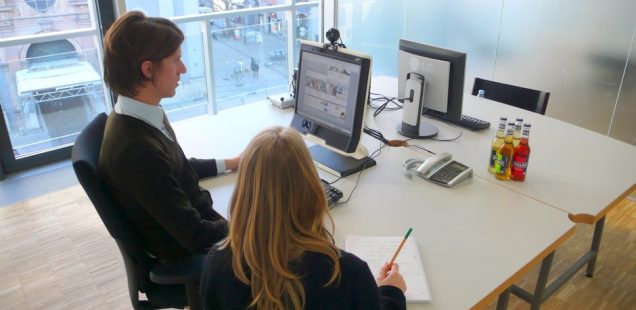
Learn Usability Testing with GIFS
After reading Learn UX Research Methods with GIFS, I decided to try and explain Usability Testing in the same format! I hope you find it as amusing as I did.
The starting line: WHY?

You can’t study anything without a subject. Why do you want to do this usability testing? Are you trying to see where improvements can be made or demonstrate that what you’ve built is already functional? Do you want to prove something or measure something? Prioritize and categorize issues to make this process easier.
What do you want to learn?

What do you want to gain from your research? Do you want to see if a feature is successful, or if the navigation is easy to use? Decide what you will be testing and when you will test it. Figure out what you want to learn and why. This process enables you to make sure your usability study will tackle these questions.
Know your audience

Who are you going to be focusing on for your study? What sort of needs do they have? What assumptions do stakeholders have about how your product is used versus what your audience actually does? What sort of demographic are they? Write down as much as you know! If you have any difficulty with this, doing interviews or more research on your audience is a helpful addition to your data.
Recruitment!

How are you going to find your audience? If you cannot physically find your audience, finding a similar group would work. What sort of incentives will you have for your study participants? Where will you find them? How many do you need?
Set up your tasks

Look back at your “Why” and “What you want to learn”. Set up your tasks around these questions and build them into scenarios. The only way you will learn what you want is by focusing questions around those queries. Choose what sort of tasks you want your participants to do (exploratory vs. descriptive, led tasks) and start writing! Make sure that your tasks are measurable!
Measuring results

You have your audience and the tasks that they will accomplish, but how will you measure your results? Are you focusing on how many times something is mentioned or how many navigational errors? What about time spent on a page searching for a link? The way that you measure results will reinforce that the tasks that you want your participants to accomplish are able to be measured.
The logistics

Easily swept aside, logistics are necessary to setting up a usability study. What’s in your toolkit? Do you have recorders or a laptop? Do you have a notetaker or is it just you and the participant? Think about these things and write them out explicitly. Have backups of basic pen and paper if technology happens to fail. It’s better to be over-prepared than under-prepared!
Analyzing Results

Look at your data. Now look at it again. Now again. Try to pull out patterns. Follow your metrics for measurement that you wrote. Take lots of notes, and make sure to give yourself breaks from the sea of comments. As you wade through it and return to it over time, more information about how users interact with your product will appear over time.

In the end, return your findings and give yourself a pat on the back! The hardest part is over with. Make sure to put your findings to good use!